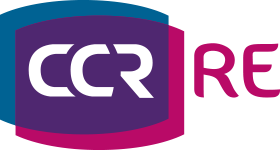Reinsurance Tutorials #20 - Season 2
Hi everybody 👋
Today, we will talk about one of the oldest forms of modern insurance: Marine insurance!
Marine insurance has a history all to itself! At the end of the seventeenth century, London became one of the most important places for trade and exchange. In the late 1680s, a man called Edward Lloyd opened a coffee shop on Tower Street in London, where the ship owners, sailors, merchants and captains would come every day.
Eventually, this small coffee shop became the meeting place of shipping partners, from the merchants looking to insure the shipment of their goods, to the carriers seeking to insure their vessels, and of course, those who wanted to underwrite all this business. Marine insurance was born. The small coffee shop continued to grow and became one of the most famous insurance market places in the world: Lloyd’s of London.
So, what does Marine insurance look like today in our globalized and modern world?
Let’s start! ⏬
Well, Marine insurance continues to grow and now covers even more categories of risks, such as Energy, yachts or builder’s risks for example.
On the reinsurance side, some markets make the distinction between two categories of insurance: Marine and Non-marine risks. This goes to show how important Marine insurance has become!
There are plenty of subcategories in Marine insurance, so in this video we will focus on the three main categories that are Cargo, Hull & Machinery and P&I.
Cargo Insurance
What is cargo insurance?
Well as you know, when a shipper entrusts its goods to a carrier, the carrier becomes responsible if the goods are subject to losses and/or damages. The carrier is covered by a minimal legal insurance policy known as “carrier’s liability”, but the coverage amount that is granted is usually quite small and does not offer a comprehensive protection to the goods.
And this is where Cargo insurance comes onto the scene! Cargo insurance protects the goods from losses and damages when transported by sea or air, and also during inland transportation (by rail or road), until they reach their final destination.
Cargo insurance even covers the goods during the loading/unloading phases. So, it’s a type of all-risk-property insurance for goods in transit from the time they leave the shipper’s warehouse until they reach their final destination!
Because trade is international, Cargo insurance conditions were standardized into the “Institute Cargo Clause” (ICC) that is used worldwide. These clauses specify what items in the cargo are covered as well as the applicable conditions. There are three basic sets of condition: ICC A, B or C.
To simplify, ICC A provides the widest coverage, offering protection against all risks for all types of items. ICC B slightly reduces the scope of cover. And, as you have guessed, the C version of the ICC is the most restrictive one on a named perils basis.
Now that the goods are protected, what about the vessel itself?
Hull and Machinery Insurance
Well, the vessel is cover by Hull and Machinery insurance!
Hull and Machinery insurance covers physical damages to the vessel itself when at sea, or others perils that could occur during transport, such as piracy, fire or explosion. The ship-owner also has the option of writing additional covers such as loss of hire, protection against a daily loss due to physical damages to the vessel, or War Risk protection.
One of the most important options is the “Running Down” clause, that provides additional legal liability protection for damages in the event of collision with another vessel when the insured is at cause. But, it is very important to understand that this running down clause does not cover any legal liability arising from bodily injury, death or damages to fixed installations, such as a harbor.
If the ship-owner wants protection for this kind of liability, then he needs to take out Protection and Indemnity insurance, which is the 3rd category of Marine Insurance that we will discuss in this video!
Protection and Indemnity, known as P&I, supplements the “Running Down” clause found in Hull and Machinery policies. It covers the policyholder’s liability when he is at fault and causes material, immaterial and bodily injury damages to a third party whether a fixed or floating object is involved. In short, it provides third-party liability protection to the carrier.
One of the special features of P&I is that it is not provided by traditional insurance companies, but by a “P&I club”.
These clubs are mutual insurance associations run by Marine professionals (ship-owners, operators or charterers). The members’ risked are pooled in accordance with the Pooling Agreement rules of the club. The club’s purpose is not to make profit, so the amount of premium, or shall I say “fees”, are rebalanced each year in accordance with the result of the pool. When the pool is in the red, members will have to pay additional fees. On the other hand, if the results of the pool are a profit, the fees will be reduced the following year.
The historical reasons for having liability carried by P&I clubs instead of traditional Marine insurers, are that Marine insurers were providing cover on measurable and limited risks only. The amount of protection provided by traditional insurers was not enough to cover the development of maritime trade exchanges in the 19th Century. As the amount and number of losses increased, P&I clubs were created to fill this gap and protect the shipowners.
Nowadays, P&I clubs provide 90% of the liability protection provided to the world’s Marine industry and are grouped under the International Group of P&I Clubs based in London, next to the Lloyd’s of London building, close to where it all begin with our old friend Edward Lloyd. Now, the circle is complete!
Conclusion
I hope you enjoyed this overview of the Marine Insurance world and see you soon for our last video of the season host by Clémence: Credit and Bonds !
Thanks for your attention!
Bye for now 👋
📺 More episodes are coming... Subscribe now to receive them in right in your mail! 📥


